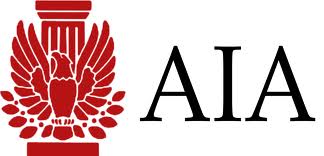Five AIA Contract Documents are going green. Developed using AIA’s flagship documents as a base, and incorporating concepts and model language from the AIA’s Guide for Sustainable Projects, the new documents address the unique roles, risks and opportunities encountered on sustainable design and construction projects.
“The development of these new documents for sustainable projects is a natural next step following the release of the Guide for Sustainable Projects in the spring,” said Ken Cobleigh, Managing Director and Counsel for AIA Contract Documents Content. “We continue to see a demand for incorporating sustainable elements in projects. The AIA Contract Documents program continues to revise existing documents and develop new documents and guides, as necessary, to remain current with trends and changes in the industry and law.”
The new AIA Contract Documents created for use on sustainable projects include:
- A101-2007 SP, Standard Form of Agreement between Owner and Contractor, for use on a Sustainable Project where the basis of payment is a Stipulated Sum
- B101-2007 SP, Standard Form of Agreement Between Owner and Architect, for use on a Sustainable Project
- A201-2007 SP, General Conditions of the Contract for Construction, for use on a Sustainable Project
- C401-2007 SP, Standard Form of Agreement Between Architect and Consultant, for use on a Sustainable Project
- A401-2007 SP, Standard Form of Agreement Between Contractor and Subcontractor, for use on a Sustainable Project
AIA Document D503-2011, Guide for Sustainable Projects, including Agreement Amendments and Supplementary Conditions, was released by the AIA in May 2011. In the short time since it was released, over 4,000 users have downloaded the Guide. In addition to providing model language that may be used to amend or supplement AIA Contract Documents for design-bid-build projects, the Guide discusses the applicability of key concepts to other delivery models such as design-build, construction management and integrated project delivery.
Because the AIA believes the Guide is an important resource for the design and construction industry, it is available as a free download at www.aia.org/sustainableprojectsguide.
These new documents will be available in the first quarter of 2012 as part of the new AIA Contract Documents service and AIA Documents on Demand. To purchase these and other AIA Contract Documents, please go to http://www.aia.org/contractdocs/index.htm. BD+C
Related Stories
Sustainability | Sep 18, 2024
3 living buildings made by a living practice
Prompting humans to reexamine our relationship to the environment, architecture creates the opportunity for us to physically experience ideas of beauty, performance, and structure through the distinct lens of place.
3D Printing | Sep 17, 2024
Alquist 3D and Walmart complete one of the nation’s largest free-standing, 3D-printed commercial structures
Walmart has completed one of the largest free-standing, 3D-printed commercial structures in the US. Alquist 3D printed the almost 8,000-sf, 20-foot-high addition to a Walmart store in Athens, Tenn. The expansion, which will be used for online pickup and delivery, is the first time Walmart has applied 3D printing technology at this scale.
Retail Centers | Sep 17, 2024
Thinking outside the big box (store)
For over a decade now, the talk of the mall industry has been largely focused on what developers can do to fill the voids left by a steady number of big box store closures. But what do you do when big box tenants stay put?
Government Buildings | Sep 17, 2024
OSHA’s proposed heat standard published in Federal Register
The Occupational Safety and Health Administration (OSHA) has published a proposed standard addressing heat illness in outdoor and indoor settings in the Federal Register. The proposed rule would require employers to evaluate workplaces and implement controls to mitigate exposure to heat through engineering and administrative controls, training, effective communication, and other measures.
Codes and Standards | Sep 17, 2024
New California building code encourages, but does not mandate heat pumps
New California homes are more likely to have all-electric appliances starting in 2026 after the state’s energy regulators approved new state building standards. The new building code will encourage installation of heat pumps without actually banning gas heating.
Mass Timber | Sep 17, 2024
Marina del Rey mixed-use development is L.A.’s largest mass timber project
An office-retail project in Marina del Rey is Los Angeles’ largest mass timber project to date. Encompassing about 3 acres, the 42XX campus consists of three low-rise buildings that seamlessly connect with exterior walkways and stairways. The development provides 151,000 sf of office space and 1,500 sf of retail space.
Education Facilities | Sep 16, 2024
Hot classrooms, playgrounds spur K-12 school districts to go beyond AC for cooling
With hotter weather occurring during the school year, school districts are turning to cooling strategies to complement air conditioning. Reflective playgrounds and roads, cool roofs and window films, shade structures and conversion of asphalt surfaces to a natural state are all being tried in various regions of the country.
Office Buildings | Sep 16, 2024
Maximizing office square footage through ‘agile planning’
Lauren Elliott, RID, NCIDQ, Director of Interior Design, Design Collaborative, shares tips for a designing with a popular and flexible workspace model: Agile planning.
3D Printing | Sep 13, 2024
Swiss researchers develop robotic additive manufacturing method that uses earth-based materials—and not cement
Researchers at ETH Zurich, a university in Switzerland, have developed a new robotic additive manufacturing method to help make the construction industry more sustainable. Unlike concrete 3D printing, the process does not require cement.
Libraries | Sep 12, 2024
How space supports programming changes at university libraries
GBBN Associate Sarah Kusuma Rubritz, AIA, uses the University of Pittsburgh's Hillman Library to showcase how libraries are transforming to support students’ needs.

















